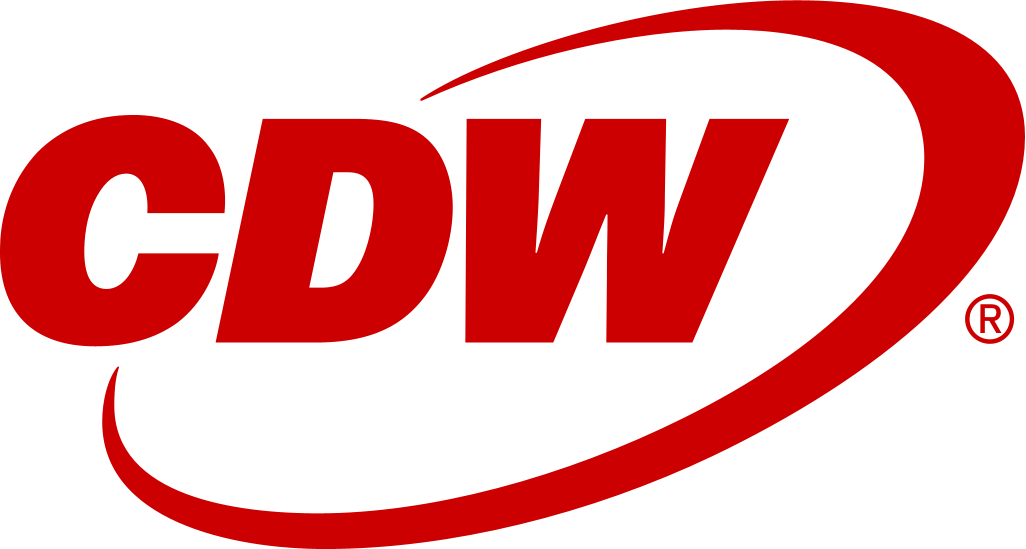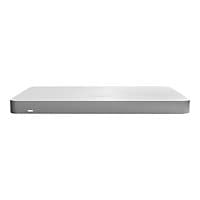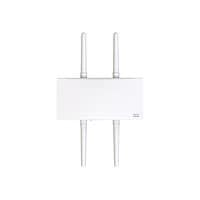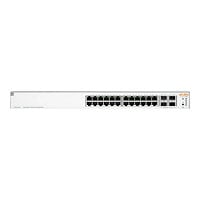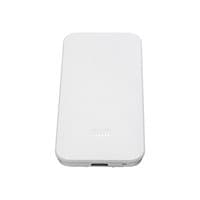Tech specs
Brand
Cisco Meraki
Product Line
Cisco Meraki
Model
MR28
Manufacturer
Meraki
Compliant Standards
IEEE 802.11a, IEEE 802.11ac, IEEE 802.11ax, IEEE 802.11b, IEEE 802.11e, IEEE 802.11g, IEEE 802.11h, IEEE 802.11i, IEEE 802.11k, IEEE 802.11n, IEEE 802.11r, IEEE 802.11u, IEEE 802.1p, IEEE 802.1Q, IEEE 802.1x, IEEE 802.3af
Connectivity Technology
Wireless
Data Link Protocols
Bluetooth 5.0 LE, IEEE 802.11a, IEEE 802.11ac Wave 2, IEEE 802.11ax (Wi-Fi 6), IEEE 802.11b, IEEE 802.11g, IEEE 802.11n
Data Transfer Rate
1.5 GBps
Features
2x2:2 MU-MIMO technology, Beamforming technology, Bluetooth Low Energy Beaconing, BSS Coloring, Cisco ISE integration, DiffServ Code Point (DSCP) support, Embedded location analytics reporting and device tracking, Enterprise Mobility Management (EMM), Firewall protection, Firmware upgradable, Global L7 traffic analytics, Guest access, Layer 2 roaming, Layer 3 roaming, Layer 7 application traffic identification and shaping, Maximum Ratio Combining (MRC), Mobile Device Management (MDM), Opportunistic key caching (OKC), Orthogonal Frequency Division Multiple Access (OFDMA), Packet aggregation, PMK Caching, Quality of Service (QoS), SU-MIMO technology, Target Wake Time (TWT), Tunneling, Unscheduled Automatic Power Save Delivery (U-APSD), VLAN Tagging, VPN support, Wi-Fi Multimedia (WMM) support
Form Factor
External
Network Band
2.4 GHz, 5 GHz
Network Standard
IPSec
Power Over Ethernet (PoE)
PoE
Product Type
Wireless access point
Status Indicators
Boot state, Firmware, Power
Wireless LAN
802.11a/b/g/n/ac Wave 2/ax, Bluetooth 5.0 LE
Interface Provided
1 x 1000Base-T (PoE) - RJ-45
Antenna Form Factor
Internal
Antenna Gain Level
6 DBi
Encryption
AES, TKIP, WEP, WPA, WPA2-Enterprise, WPA2-PSK, WPA3-Enhanced Open, WPA3-Enterprise, WPA3-Personal
Internet of Things (IoT) Compatible
Yes
Line Coding Format
1024 QAM
Max Operating Temperature
104 degree Fahrenheit
Min Operating Temperature
32 degree Fahrenheit
MTBF
257,215 Hours
Operating Humidity
5 - 95% (non-condensing)
Authentication Method
EAP-SIM, EAP-TLS, EAP-TTLS, MS-CHAP v.2
IoT Communications Technology
Bluetooth Low Energy (LE)
Packaged Quantity
1
Service Activation
No
Network Device
Maximum data rate (2.4 GHz): 286 Mbps, Maximum data rate (5 GHz): 1201 Mbps
Height
1 inch
Weight
9.59 ounce
Width
8 inch
Depth
4.9 inch
Color Category
White
Compliant Standards
AS/NZS 2772, AS/NZS 4268, CB 60950, CB 62368, CISPR 22, CSA, EN 300 328, EN 301 489-1-17, EN 301 893, EN 50385, EN 55032, EN 62311, EN 62479, EN55024, FCC Part 15 B, FCC Part 15 C, FCC Part 15 E, FCC Part 2, ICES-003, IFT, NCC LP0002, NOM-208, RoHS, RSS-102, RSS-247, UL 2043, VCCI
ENERGY STAR Certified
No
EPEAT Compliant
No
TCO Certified
No
Service & Support Details
Limited warranty - advanced replacement - lifetime
Limited Warranty
Limited Lifetime
Warranties
1-8 of 100 reviews
Efficient deployment through user-friendly setup and cloud-managed interface
What is our primary use case?
My main use cases for Cisco Meraki Wireless LAN are firewall, switching, wireless, environmental probes, and CCTV cameras.
What is most valuable?
The most useful features for Cisco Meraki Wireless LAN are the cloud-managed interface and the plug-and-play system.
With the Cisco
Read more
Centralized control simplifies network management for non-profit environments
What is our primary use case?
We have two different environments. We have set it up in a large building with five access points, and one access point in another building. We are a non-profit organization.
What is most valuable?
The ability to program all access points from the Cisco Meraki Wireless LAN dashb
Read more
Easy to manage wireless networks on the cloud without a server
What is our primary use case?
I've been working with schools for about 20 years. I previously worked in a school with four campuses and about one thousand students, where I managed all four campuses' wireless networks with Cisco Meraki Wireless LAN.
What is most valuable?
The solution's most valuable feature
Read more
Provides a reliable portal and a straightforward setup process
What needs improvement?
One significant area for improvement with the Cisco Meraki Wireless LAN solution lies in its licensing model. The issue primarily revolves around failure to renew the license on time, leading to service termination.
What do I think about the stability of the solution?
I rate the platf
Read more
Enables organizations to control many sites globally with a lean IT team and provides visibility into the user activities
What is our primary use case?
We use the solution for the office infrastructure to migrate from LAN to Wireless LAN. We also use it for IoT.
What is most valuable?
Meraki is far better than any other wireless solution. It is pretty easy to use. I can control any number of sites globally with a lean IT team.
Read more
Offers flexibility and a centralized dashboard
What is our primary use case?
I have sold Cisco Meraki Wireless LAN in Pakistan's market since its cloud management features are good.
The product is useful for security purposes, specifically network security or to secure a network. It is useful for our company's clients who want to secure their network over
Read more
A wireless solution for LAN connectivity with easy setup
What is most valuable?
The Cisco Meraki Wireless LAN is hosted on the cloud. Users enjoy all the features available on the platform, and it facilitates seamless communication for our business operations. Integrating with the router, firewall, and Wireless Controller is advantageous.
What needs improvement?
T
Read more
The tool offers integration capabilities, but the licensing model needs improvement
What is our primary use case?
I haven't personally recommended the product to my company's customers. Many of my company's customers use Cisco Meraki Wireless LAN at corporate levels where wireless LANs are needed.
What is most valuable?
I am not a big fan of Cisco Meraki Wireless LAN. Based on my company's
Read more
